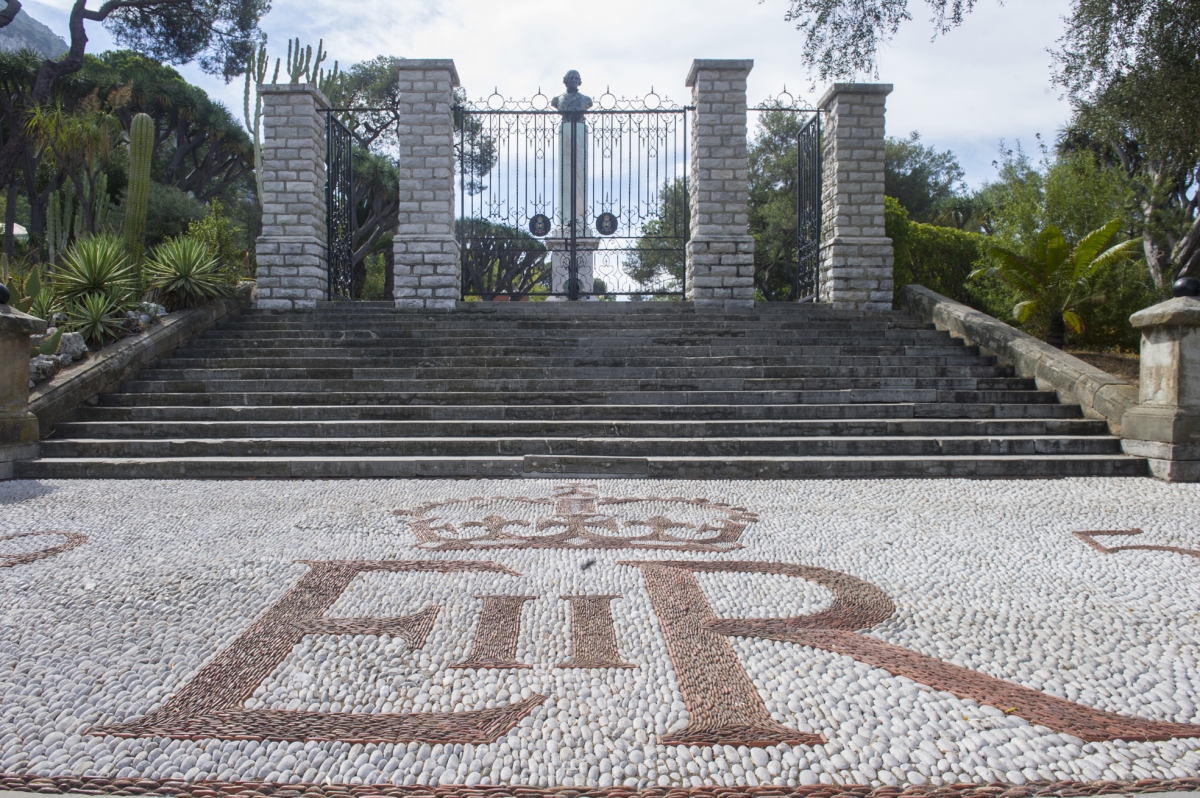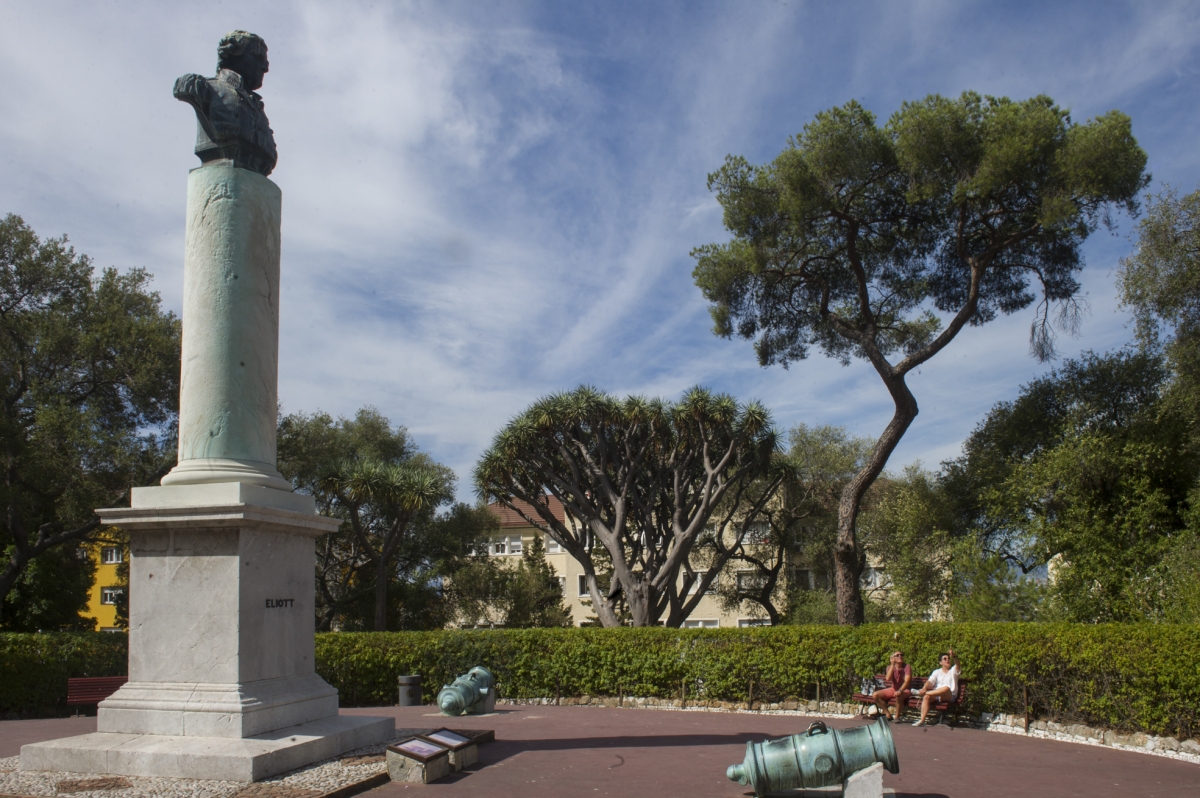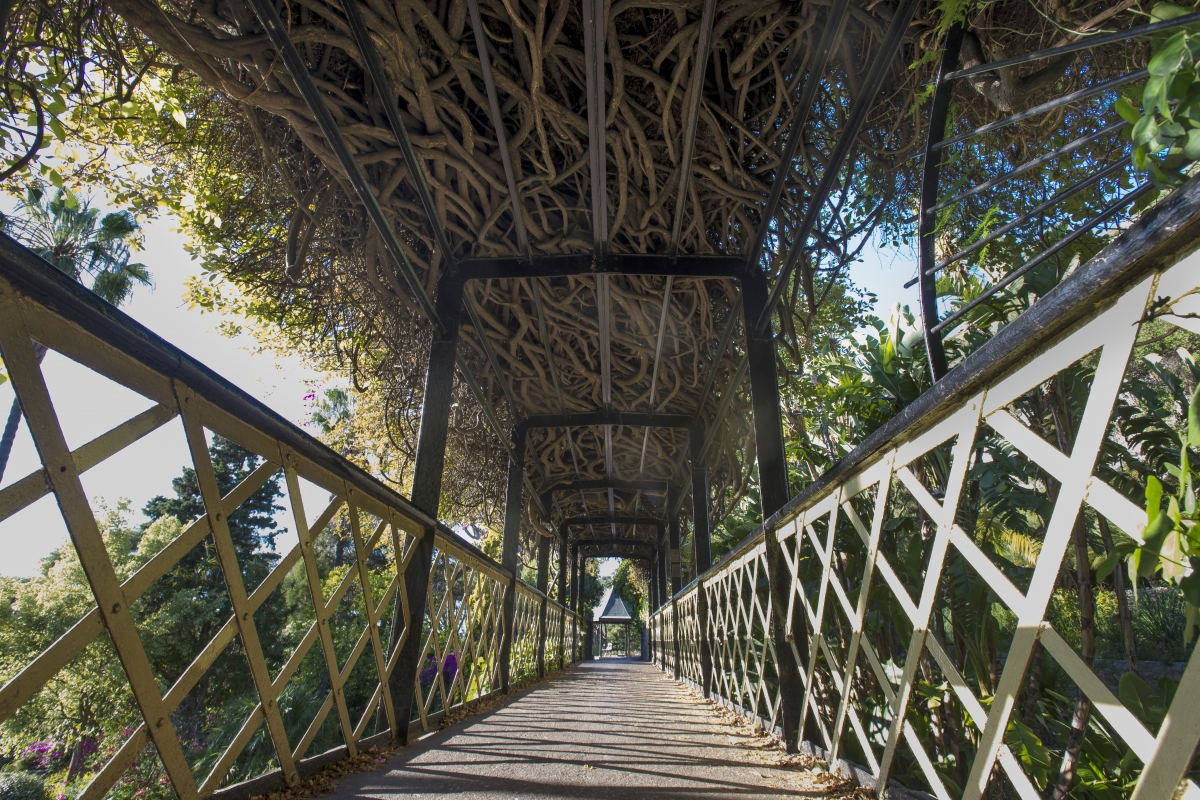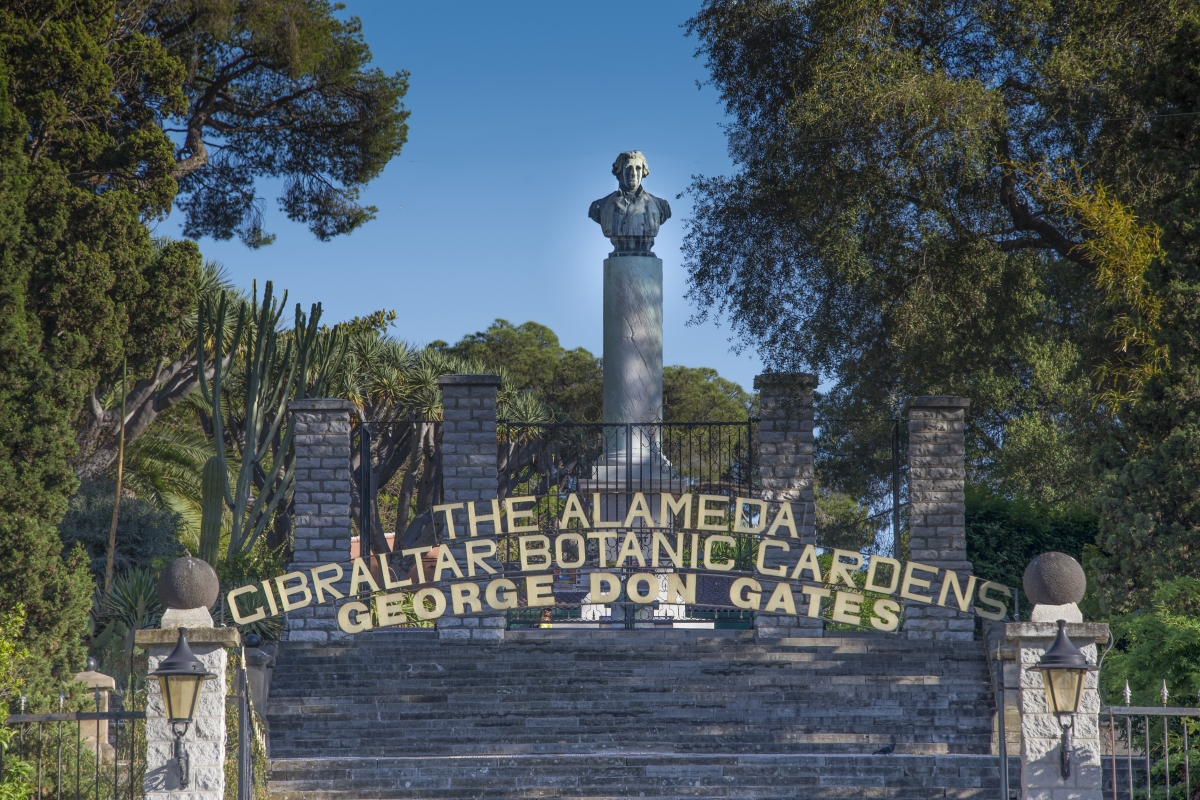- Home
- Things to do
- Gibraltar Botanic Gardens, The Alameda Gardens
The spectacular Alameda Gardens were first opened to the public in 1816 and there are a number of commemorative busts and cannons which date back to the 18th and 19th century on view. For most visitors, however, it is the beauty of the plants and trees which make the Alameda such a magical place; many are native species while others are imported. At certain times of the year, various cultural events take place in the gardens’ open-air theatre. Tours of the Botanic Gardens are also available. Two important monuments can be viewed here, but pride of place goes to the General Elliot Column and the impressive bronze ordnance at its feet. At the entrance are two of the four Russian guns given to Gibraltar by Britain, for Gibraltar’s help during the Crimean War, in 1858.
The main plants of the Alameda Gardens from the earliest days were the Stone Pine, the wild Olive, and the Dragon Tree. It would appear that some of these trees, which still survive, pre-date the opening of the garden and thus are at least 200 years old. Planting subsequent to this had included notably species from South Africa (e.g. Plumbago capensis, Aloe arborescens, capensis, Tecomaria capensis) and Australia (e.g. Melaleuca decussata), possibly as a result of shipping contact between Gibraltar and the other colonies en route to Australia.
Dragon Tree: The Dragon Tree comes from the Atlantic Islands of the Canaries, Madeira and Cape Verde. It is an unusual member of the lily family. The red resin which quickly crystalises was used medicinally and known as Dragon’s Blood. The smooth grey bark is reminiscent of an elephant’s hide. Its panicles of showy white flowers appear irregularly in summer and produce bright orange berry-like fruit in winter. The oldest dragon tree in the gardens is probably about 300 years old, though there are claims that they live upwards of 1000 years.
Stone Pine: This is a native of the Mediterranean where it favours sandy coastal locations. The pine nuts produced in the rounded cones are edible. Roasted and sugar-coated these ‘piñones’ are a delicacy. The cones and nuts in the gardens are often eaten by frugivorous tree rats before they fall to the ground. The outer surface of the bark of this tree in the gardens is about 200 years old. The Aleppo Pine is less common in the gardens. It has pointed cones, winged, inedible seeds and more finely marked bark than the Stone Pine. There is one large Canary Island Pine in the upper part of the garden.
Wild Olive: The most common tree in the Alameda, the wild olive, produces small white flowers in summer followed by small black olives in winter. Too bitter for human consumption, it is a favourite food of wintering birds, including blackcaps. The wood is strong and hard wearing. This tree is the ancestor of the cultivated olive tree.
Nettle Tree: Related to the elms, this tree has nettle-shaped leaves that do not sting. Probably native to Gibraltar where it will have formed part of the ancient woodland that covered what is now the town area. A deciduous tree with bright green foliage in spring that turns darker as summer progresses. Its grey bark is smooth. There is a Nettle Tree in the centre of the Lions’ Pond.
Australian Silk Oak: There is only one specimen of this tree in the gardens, on the lower southernmost area (Atlantic Island Bed). Its springtime flowering is spectacular with orange and red flowers producing copious amounts of nectar which attracts bees and birds. Canary Island Date Palm: The common palm of Gibraltar is a native of the Canary Islands. It has long fronds and orange, inedible dates. Washingtonia: Large, fan-leaved palm originates from the deserts of North America. One of the two large specimens in the Dell has retained its ‘petticoat’ of old leaves.
Lord Howe Island Palm: Two of these attractive palms grow in the Dell above the bridge. They were reputedly donated to the gardens as young plants by an elderly lady the day she was evacuated in 1941, during the Second World War. Other species of palm are being added to the garden’s collection.
Hibiscus: Also known as ‘Rose of China’, many attractive varieties of this tropical shrub grow in the gardens, notably in the Hibiscus Bed and in the Dell where there are a number of especially beautiful large-flowered forms. The Hibiscus bed also holds other species of Hibiscus, including the Swamp Mallow Hibiscus and the Fringed Hibiscus, as well as other members of the Hibiscus, or Mallow Family.
Bougainvillea: Named after French explorer Louis de Bougainville, these showy scramblers come from tropical South America. Of the various varieties growing in the gardens, the purple and deep red are the most spectacular, especially during their main flowering period in summer. The colour is provided by modified leaves called bracts, while the white flowers are small and insignificant.
Daisies: There are numerous members of this family in the gardens. The small bright blue flowers with yellow centres are Felicia from southern Africa. All-yellow daisies are Euryops, which are also South African. Also from that region are the grey-leaved squat Gazania and the shrubbier Arctotis (often with orange flowers). Rounded bushes with white flowers with yellow centres in early spring are the Canary Island daisies. A climbing daisy and a tree daisy, from Mexico, can also be seen.
Climbers, creepers and scramblers: A number of other climbers, creepers and scramblers are common in the gardens, often shaped into hedges. With bright orange tubular flowers is the Cape Honeysuckle, from South Africa. Also South African is the pale blue flowered Leadwort. There is a Chinese Wisteria over the upper fountain in the Dell, while on the bridge grow Bougainvillea, Lantana and Wisteria as well as Golden Chalice and the Australian Native Wisteria. Scattered about the gardens are a number of honeysuckle, Jasmine and Jessamine or ‘Dama de Noche’, with its intense scent in summer evenings.
Shrubs and bulbs: Some of the more obvious shrubs of the gardens include Oleanders, with pink, white or yellowish flowers in summer, the Blue Butterfly Bush with pale blue flowers in late winter and the native Shrubby Scorpion Vetch with sweet-scented bright yellow flowers in late winter and early spring. One traditional plant of the Alameda which has been re-planted in various areas is the Heliotrope which has pale blue flowers and an overpowering cherry-pie scent. The Bugloss is another shrub with attractive blue flowers. In late summer the pink trumpets of the Bella Donna Lilies appear from the dry ground. In winter and spring dark green clusters of leaves show instead. Agapanthus with blue flowers and Antholyza aethiopica, with orange flowers are another two southern African bulbous plants of the Alameda.
Pelargoniums: Commonly known as geraniums, these plants, which mainly originate in South Africa do well in Gibraltar’s similar climate. A number of cultivated varieties grow around the gardens, while true species can be seen in certain areas. These include the attractive Oak-leaved Pelargonium and other species with scented leaves.
Succulents: Several beds are dedicated to succulents from the dry regions of the world. Many plant families have developed some form of succulent habit. The best represented in The Alameda include: Aloes: Mainly southern African and have spikes of tubular, often red flowers. These are pollinated by sunbirds in Africa and also attract birds in Gibraltar to feed on their copious nectar. The most common is the Tree Aloe which flowers in winter.
Cacti: Almost exclusively American and include the pad-like Opuntia, the columnar species like Cleistocactus jujuyensis, the cushion-like Echinocactus grusonii and the climbing species with large night-opening flowers like Hylacereus undatus candelabrum.
Euphorbias: or spurges have many forms, including ones, like Euphorbia candelabrum that resemble columnar cacti. Other forms to be seen on the main succulent bed are represented by, for example, Euphorbia stenoclada and E. milii hislopii. The small succulent bed near the Theatre is dedicated to plants of the Sonoran Desert in North America.
Gibraltar and Mediterranean: Wild plants are to be found in locations throughout the gardens, with some beds being particularly dedicated to them. Gibraltar plants to be seen include the Gibraltar Candytuft, the Gibraltar Restharrow and the very rare Gibraltar Campion. The Mediterranean Bed in particular has typical species including lavenders and Cistus Sun Roses, as well as leguminous shrubs and bulbous or rhizomatous plants like the Paper-white Narcissus, Giant Squill and Asphodels.
Other beds: Some of the other beds are dedicated to the plants of California, Australia, South Africa, and the Canary Islands, regions with a climate similar to Gibraltar’s. The Family Beds display plants according to selected plant families.
Wildlife in the Gardens: Herbicides and pesticides are not generally used in the Alameda, and so there is a rich wildlife. Bird species nesting within the gardens include Sardinian Warbler, Blackcap, Blackbird, Robin, Greenfinch, Serin and Wren. Winter additions include Grey and White Wagtail, Chifchaff, Black Redstart, Chaffinch, Short-toed Tree-creeper and occasionally Kingfisher, while notable birds of passage periods are Hoopoe, Redstart, Woodchat Shrike and flycatchers. Kestrel (throughout the year) and Booted Eagle (in winter) regularly hunt in the grounds. Reptiles include the Moorish Gecko, Iberian Wall Lizard, Amphisbaenian and the harmless Horseshoe Whip Snake. Of the bats, the Pipistrelle is the commonest (often seen during the day), while Schreiber’s Bat and the European Free-tailed Bat can also be seen. The Alameda Gardens are peat-free. Coconut fibre and our own composted material is used in order not to foster the destruction of peat bogs in northern Europe, which are important wildlife habitats.

Opening Hours
- Mon-Sun
- 09:00-18:00
Admission Prices
Free



 English
English Spanish
Spanish French
French Italian
Italian German
German




